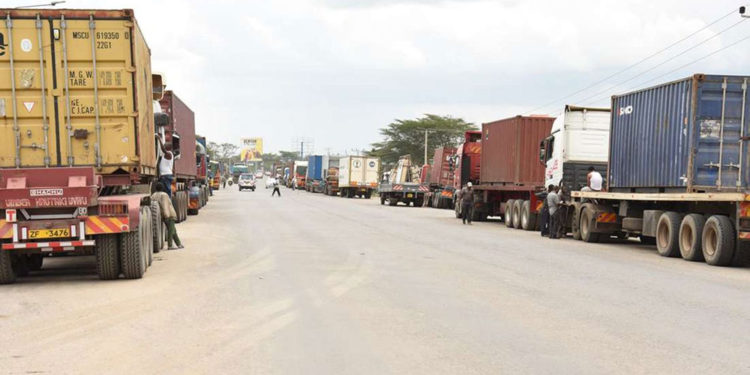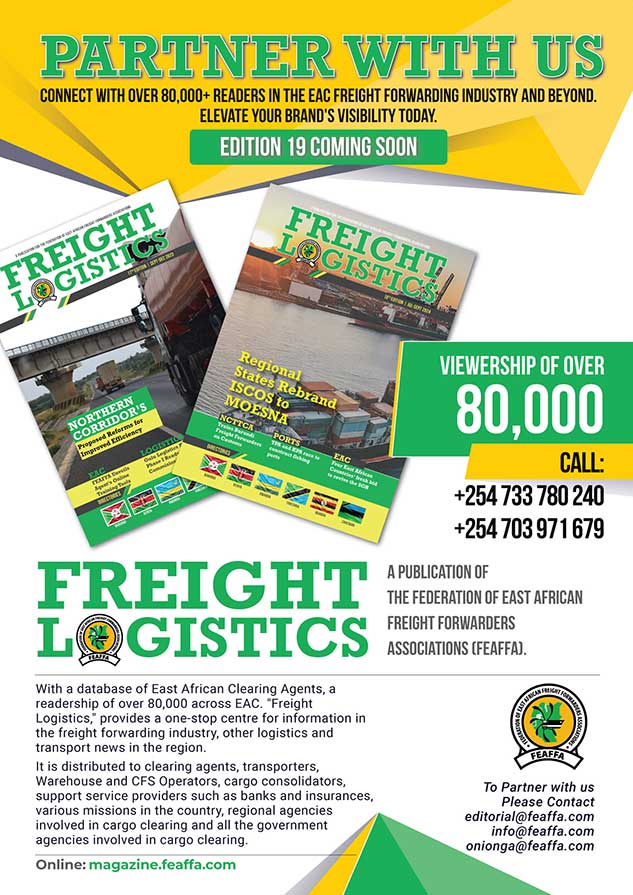Trucks using the Northern Corridor route to haul goods in Kenya from Mombasa port to hinterland is a major contributor of GreenHouse Gas (GHG) emissions, according to a new study.
Trucks journey from the port of Mombasa to transit countries in the region constitute 58 percent of estimated total GHG emissions and return journeys constitute 42 percent.
In the return journey, the empty container freight transport trips contributed 59 percent and loaded trips contributed 41 percent of the estimated total emission, according to the Northern Corridor Transit and Transport Coordination Authority (NCTTCA) report.
Carbon Dioxide (CO₂) emissions account for major emissions compared to other Greenhouse Gases in the region.
The estimated total GHG emissions of the Northern Corridor are 1.73 million tons, out of which Carbon Dioxide (CO₂) emissions account for about 98.75 per cent; followed by Nitrous Oxide (N2O) emissions. Methane (CH₄) emissions are comparatively very small.
“Hence, the climate change mitigation measures which need to be planned for the Northern Corridor region require to focus mainly on reducing Carbon Dioxide emissions,” NCTTCA said.
The top 10 routes having maximum GHG emissions along the Northern Corridor are: Mombasa-Malaba, Mombasa-Nairobi, Mombasa-Busia, Nairobi-Busia, Busitema-Kampala, Luwero-Elegu, Luwero-Goli, Mbale-Goli, Mubende- Kasindi and Mbale-Elegu.
Out of 25 routes in the Northern Corridor region, these 10 routes constituted 86 per cent of estimated total GHG emissions of the corridor.
Last year, a new initiative was rolled out as part of efforts to comprehensively deal with pollution along the Northern Corridor. The details of the project were captured in a concept paper titled ‘Reduction of greenhouse gas (GHG) and pollution in the freight transport sector along the Northern Corridor’.
The document was done by the NCTTCA and supported by Trade Mark East Africa (TMEA). The NCTTCA members are Kenya, Uganda, Burundi, Rwanda, Southern Sudan and the Democratic Republic of Congo (DRC).
NCTTCA said that the initiative was part of other projects the organisation rolled out several years ago to mitigate pollution in the maritime sector in line with the International Maritime Organization (IMO) rules on greenhouse gas emissions.
“The policy organs directed the NCTTCA to implement the green road freight program between its member states in 2016 and by 2017, we had already done a baseline survey for emissions at the Port of Mombasa,” NCTTCA said last year.
The regional transport agency was charged with assessing the level of pollution from the port to the final destination of the goods
NCTTCA in the concept document detailed how the transport sector is impacting the environment, and contributing to climate change challenges.
“The size of the logistics sector in EAC is estimated at $15-25 billion per annum. The EAC economies are growing rapidly increasing the transport sector at the same pace. Consequently, Freight Transport Sectors are nationally one of the fastest growing sources of Greenhouse Gas (GHG) emissions and pollution,” NCTTCA said in the document.
The document further said the German Corporation for International Co-operation (GIZ) and the Kenyan Ministry of Transport have estimated that Heavy Goods Vehicles (HGV) cause most emissions at 40 percent in the transport sector.
The study also indicated that mitigation potential is estimated to be highest in truck trafficking (HGVs).
Trends in the transport sector in the other EAC countries are rather similar to the Kenyan situation, although corridor impact is highest in Kenya and Tanzania.
The document also identified potential GHG emission reductions in the transport sector, indicating that experiences around the world show that training in efficient logistics and economic driving offer comparative advantage to companies.
Experts say economic driving is a relatively low-cost and fast action to reduce fuel consumption and emissions significantly.
Private sector involvement has been key in providing support for drivers training on fuel efficient driving, waste management, safety and personal coaching.
Players say low carbon technology in the transport sector is developing fast and has a lot of opportunities to be adopted into on-going projects and activities in various countries.
“ICT can provide solutions for real-time logistics efficiency improvements, fuel consumption and cost savings of individual vehicles, which can also be used as incentive for drivers,” states the document seen by Shipping.





